Region Värmland #RuralSpot Round-up
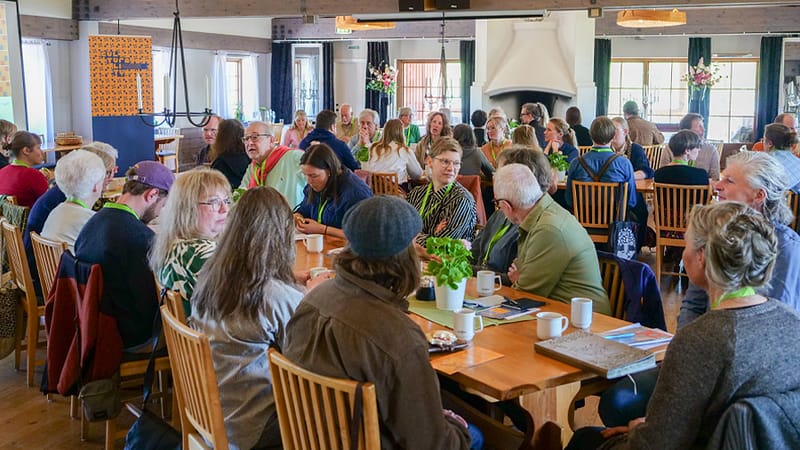
News & events Things Are Bubbling in Värmland! On May 15, 56 artisans and cultural practitioners, association members, and professionals from the tourism sector and Arvika Municipality gathered at Brunskog’s heritage center in Värmland to exchange ideas for activities, experiences, and methods that could bring new life to western Värmland and its surroundings. “Things Are Bubbling” was part of Region Värmland’s #RuralSpot event for CULTURALITY. Brunskog’s Heritage Center Brunskog’s heritage center is a place with great potential. It has a long history of cultural heritage work, but it also needs to develop new activities for visitors, especially during the off-season. The surrounding area is home to many craftspeople, artisans, and other cultural actors who will be a driving force in the continued development process. Inspirational Lecture by Mikael Öst The day began with an inspirational lecture by Mikael Öst from Delsbo in the Hälsingland region of Sweden. In Mikael’s artistic practice, storytelling is central. By developing and placing tradition in a new context, he creates new frameworks that bring cultural heritage to life. Participants’ Ideas in Focus The main focus of the day was to highlight the participants’ own ideas and questions. Even before the gathering, they were asked to reflect on the needs and desired development of the area, the tourism sector, and their own work. The event was organized as an Open Space meeting, where the process was driven by the participants’ own questions—giving them the opportunity to shape the content themselves. During three sessions, they were free to choose discussion groups based entirely on their own interests. Some of the questions discussed included: What symbols exist and are being created around the cultural heritage of Värmland? How can we engage young people in preserving their local cultural heritage? How can we promote tourism destinations through educational courses? How can different cultural expressions create unexpected synergies with other practices, such as e.g. sports and heritage? There was strong engagement among the participants across various cultural fields. A clear will and knowledge to develop the countryside was evident, and through Culturality, there is an opportunity to connect different forces. The gathering also provided an important space for participants to form new contacts and expand their networks. Share with: Previous Post
Espacio Tormaleo #RuralSpot in Asturias
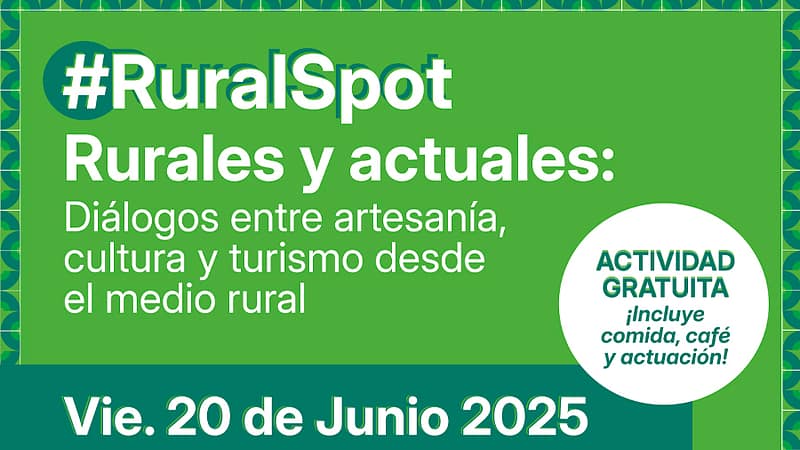
News & events CULTURALITY Partner Espacio Tormaleo Hosts #RuralSpot Event in Asturias On 20th June 2025, Espacio Tormaleo is hosting a full-day event in Zarréu (Degaña, Asturias) as part of CULTURALITY. This event is part of the series called Rural Spot, which is organised by project partners in remote rural areas to foster knowledge exchange and community engagement through cultural heritage. This edition, entitled “Rurales y Actuales”, brings together local stakeholders, cultural professionals, and policy experts to explore key themes such as gender and culture, craftsmanship and innovation, and the links between cultural management and tourism. The programme includes expert presentations (some online), local discussion panels, and networking opportunities. The event is supported by the Degaña Town Council and other local and regional institutions. The day will close with a folktrónica/electrofolk DJ set by Castora Herz (Samain Music). All activities are free and open to the public, with refreshments and lunch included. Check out the full programme below (in Spanish): Share with: Previous Post
Ljubljana Symposium Explores Contemporary Handicrafts and Culturality Themes
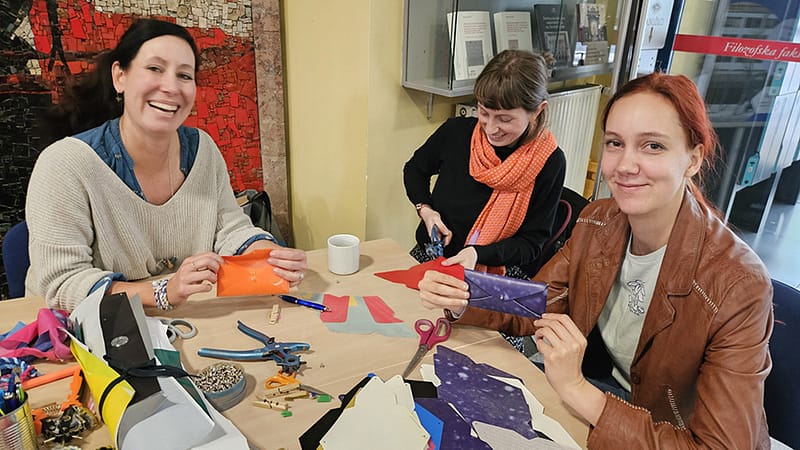
News & events Ljubljana Symposium Explores Contemporary Handicrafts and Culturality Themes The international symposium “Hands-on Ethnographies: Production and Meaning of (Contemporary) Handicrafts”recently took place in Ljubljana, bringing together researchers, practitioners, and artists to explore critical perspectives on craft. The event addressed key issues such as gender roles in handicraft practices and marketing, the evolving relationship between contemporary artists and traditional craftspeople, and broader questions that resonate with the CULTURALITY project’s core themes. Saša Poljak Istenič from ZRC SAZU, one of CULTURALITY’s partners, moderated a session dedicated to representations of craft in cultural discourse, while a second session focused on the practical aspects of handicraft production. The symposium also featured a vibrant handicrafts fair with hands-on workshops in sewing, macramé, and even household appliance repair—highlighting the ongoing relevance and adaptability of traditional skills in modern contexts. conference 2 conference 1 fair 3 fair 1 fair 2 fair 4 Share with:
UNIOVI at Asturias Science and Innovation Fair

News & events CULTURALITY’s partner UNIOVI connects science and heritage at the 3rd Asturias Science and Innovation Fair On May 9, several members of the University of Oviedo team participated in the 3rd Asturias Science and Innovation Fair with their newly released activity “Discover the craft/Descubre el oficio”, an interactive proposal designed to bring the world of traditional crafts closer to younger audiences through multisensory interaction. Santiago Rodriguez Fernández & Ángela Sánchez Herrero taking over the stand for the second shift Through their senses of touch, smell and hearing, visitors and participants of all ages had to guess which typical artisanal craft different raw materials related to and then locate their region of origin on a decent-sized map of Asturias. The activity took place in the morning for high school, vocational and training students, and was open to the general public in the afternoon. Lucía Pérez Fernández, Marta Fernández Vilar & Llara Fuente Corripio explaining the activity Llara Fuente Corripio explaining the game to some participants Flyers, stickers & various materials used during the activity This initiative was conceived within the framework of the Es|Art research group at the University of Oviedo and implemented by a multidisciplinary team of members of CULTURALITY (Llara Fuente Corripio, Marta Fernández Vilar, Ángela Sánchez Herrera, Lucía Pérez Fernández, and Santiago Rodríguez Pérez). This action is part of its broad outreach program, aimed at highlighting the value of cultural heritage and traditional practices and promoting awareness of craft practices in rural Europe. Text: Lucía Pérez FernándezPhotography: Lucía Pérez Fernández, Ana María Fernández García, Santiago Rodríguez Pérez III Feria de la Ciencia y la Innovación de Asturias (Official Website) Share with: Previous PostNext Post
A new project on the Asturian Fiddle

News & events A new project on the Asturian fiddle Celia Nieto and Marta Fernández Vilar coordinate the recordings of a book-disc linked to the “Xornaes del Vigulín” Yesterday morning, the recordings of what will be a book-CD linked to the “Xornaes del Vigulín” (L’Infiestu) started at Supersonic Studio. This initiative, held by CULTURALITY, coordinated by the University of Oviedo, has seen “Xornaes del Vigulín” as an example of good practices of Cultural Heritage curatorship in the rural world. Vigulín player recording in the studio Recording session in the studio Celia Nieto and Marta Fernández Vilar are coordinating the musical part of this book-CD, with the participation of various fiddlers of the Asturian folk scene, students and teachers of the “Xornaes”. The book will also include a compendium of articles studying different aspects of the violin within the Asturian musical tradition, as well as the scores of the different recordings. The book is expected to be published in September and will be available open access. Xornaes del Vigulín on Facebook Text and Images: Marta Fernández Vilar, UniOvi Share with:
Upcoming International Symposium to Explore Contemporary Handicrafts
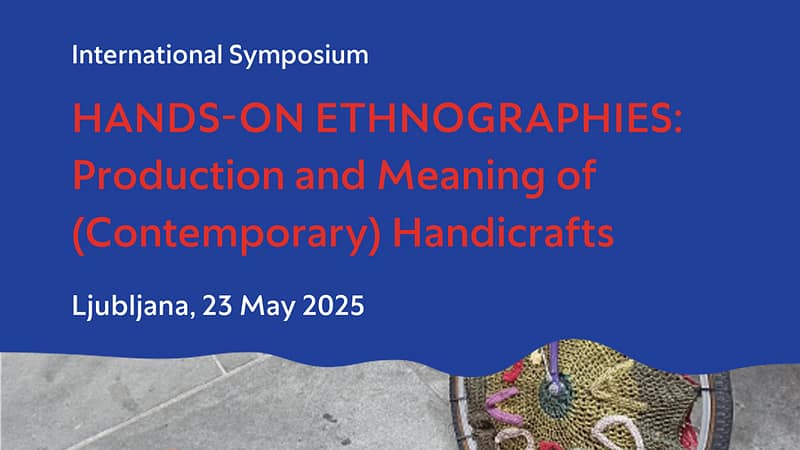
News & events Upcoming International Symposium to Explore Contemporary Handicrafts On May 23, 2025, Department of Ethnology and Cultural Anthropology at the Faculty of Arts, University of Ljubljana will host the international symposium “Hands-on Ethnographies: Production and Meaning of (Contemporary) Handicrafts”. This event, part of the Faculty of Arts’ Year of Heritage, will bring together researchers and enthusiasts to explore the dynamic field of handicrafts. The symposium will feature sessions examining the representation and practices of handicrafts in today’s world. Discussions will cover various topics, including the social role of handicrafts, women’s perspectives on craft production, the impact of technology on traditional practices, and the potential of handicrafts to address challenges of adolescence and ageing. Saša Poljak Istenič from the Culturality project team will moderate the “Representations” session, bringing findings from recent Culturality research into the conversation. In addition to the academic discussions, the event will highlight the practical and social dimensions of handicrafts. A handicraft fair scheduled for the same day will enable visitors to interact with craftspeople and their creations directly. Furthermore, a public discussion on May 22 will explore the cognitive benefits and contemporary significance of engaging in handicraft activities. The symposium aims to emphasize the ongoing importance of handicrafts in contemporary society, highlighting their connections to cultural heritage, economic structures, and personal well-being. Download the Book of Abstracts Share with: Previous Post
Presentation at Brobygrafiska Students: Exploring Värmland’s Cultural Crafts
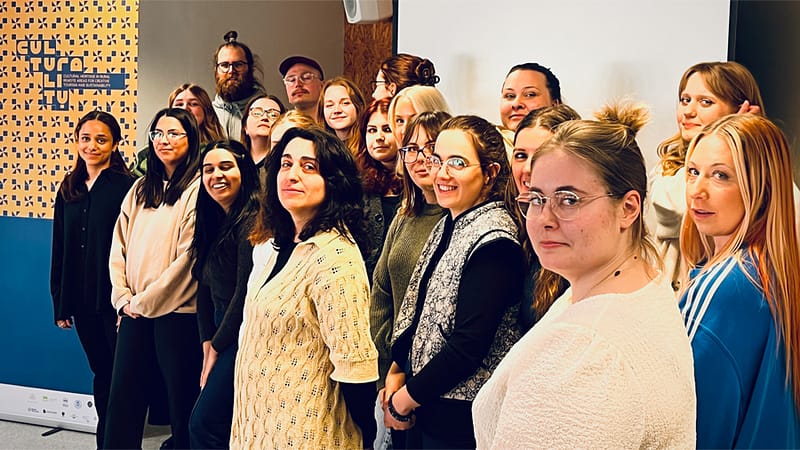
News & events Presentation at Brobygrafiska Students: Exploring Värmland’s Cultural Crafts As part of the CULTURALITY project’s mission to promote cultural heritage through digital innovation, students at Brobygrafiska have collaborated with Region Värmland to design a prototype for a story-driven digital platform. Focused on showcasing local artisans and craftsmen, the project blends branding, storytelling, and UX design to explore how digital tools can support rural cultural tourism. Digital story-driven platform is created in collaboration with Brobygrafiska During seven intensive weeks, about twenty students who study Digital Design at Brobygrafiska have worked on an assignment prepared together with Region Värmland. It is about developing a prototype for an interactive digital story-driven platform that lifts artisans and craftsmen in Värmland. Film developer Stefan Barkman tells how it happened. “Part of the Culturality project is about digital resources for research, outreach and collaboration. After collecting materials and some testing, we realized the need to involve UX design in the process. We contacted the Digital design teacher at Brobygrafiska who understood our entrance and we began a fruitful collaboration.” Assignment to students Jonathan Rist Christensen, teacher in Digital Design at Brobygrafiska explains how they took on the assignment. “The students were given an open brief about creating a digital platform to promote Värmland’s cultural crafts, with tourists as the target group. The focus was on finding a solution that would benefit and be used by the target group, depending on the concept they came up with. The project began with research to understand the target group and their origins. With the help of reports and statistics from Visit Värmland, they were able to identify different target groups based on their concepts. Then followed an iterative process to develop the solution, with many hours of hand-drawn wire sketches that were then transformed in Figma into a clickable prototype. In addition to this, students also had to create a brand to connect with the storytelling and communicate with the target audience in the right way.” Many creative ideas On April 8th, Stefan Barkman and Kajsa Stinnerbom, Region Värmland, together with representatives from Visit Värmland and Compare, were on site in Sunne to take part in the results of six groups’ creation of different creative platforms. “Great work from the students, it was very interesting to take part in all the groups’ presentations. It came with many exciting angles and solutions. We gained insight into how digital design for interactive platforms works and what opportunities they bring, as well as the importance of the aesthetic work behind such a product,” says Stefan Barkman. Develop a digital platform and storytelling Jonathan Rist Christensen further develops the reasoning how branding and storytelling are connected. “For us at Brobygrafiska, branding and storytelling go hand in hand. If you don’t know how to tell something, there may not be much to tell. When the brand has a clear core of values, storytelling becomes much easier as it becomes an extension of the brand as a personality.” Jonathan emphasizes what is important when developing a digital platform. “A digital platform needs to be accessible, adaptable and user-friendly. Our job as digital designers is not only about reducing frustrations but also about delivering an enjoyable experience. Here we use storytelling to our advantage. Digital storytelling is already interactive by its very nature. What we can then add and connect to strengthens the target group’s relationship with the brand if it is implemented in the right way. Similarly, you get the opposite effect if it is implemented in the wrong way.” Alstret (Created by a student group at Brobygrafiska) Nordic Atelier (Created by a student group at Brobygrafiska) Levande verk (Created by a student group at Brobygrafiska) Share with:
Third CULTURALITY Consortium Meeting

News & events THIRD CULTURALITY CONSORTIUM MEETING The CULTURALITY project partners gathered once again—this time in the picturesque capital of Slovenia—for the third Consortium Meeting, held from March 24th to 28th, 2025. The meeting was hosted by ZRC SAZU at the Geographical Museum, with sessions taking place in the Gosposka and Križevniška Halls—right in the heart of Ljubljana’s historic centre. Just a short walk from the Ljubljanica river and surrounded by lively cafés, local restaurants, and charming hotels, the venue offered an ideal setting for meaningful discussions and intercultural exchange. The five-day meeting focused on consolidating the project’s progress and strengthening the collaborative dynamic between partners. A full day was dedicated to Work Package (WP) presentations, where leaders of WPs 1 to 8 each delivered 30-minute reports. These presentations covered the work accomplished during the project’s first year and outlined strategic plans for the next six months. In addition to the WP sessions, a Steering Committee Meeting was held to discuss key administrative and operational matters, review the project timeline, and ensure continued alignment across the consortium. Participants also took part in a rich cultural and creative programme, including guided visits to Center ROG, Ljubljana’s new hub for creative industries and maker culture, and the Slovene Ethnographic Museum, a key institution for understanding Slovenia’s diverse cultural heritage. These visits offered valuable insights into local practices of cultural preservation, innovation, and community engagement—central themes within the CULTURALITY project.To conclude the week, partners enjoyed an excursion to the Škofja Loka area, the future location of the Slovenian Rural Event. The visit allowed participants to explore the rural cultural landscape firsthand, connecting deeply with the people and traditions that inspire CULTURALITY’s mission to foster sustainable cultural tourism and creative rural development.As the project moves into its next phase, the Ljubljana meeting marked a renewed commitment to collaboration, innovation, and cultural sustainability across Europe’s rural and remote regions. presentation_Ana presentation_Tartu presentation_UOviedo presentation_STAndrews Audience visit7 visit6 Hands_on2 Hands_on1 visit4 visit3 visit5 visit2 visit1 Hands_on3 Share with:
UA.LABDESIGN – University in the Villages Exhibition Comes to a Close at the University of Aveiro

News & events UA.LABDESIGN – University in the Villages Exhibition Comes to a Close at the University of Aveiro The exhibition UA.LABDESIGN – University in the Villages, presented by ID+ Research Institute for Design, Media and Culture, officially closed on February 21, 2025, after two months on display at the Department of Communication and Art of the University of Aveiro. Inaugurated on December 17, 2024, the exhibition attracted significant attention from students, researchers, local communities, and the broader public. The initiative was supported by the European project CULTURALITY – Creative Tourism and Sustainability in Remote Areas, aligning with its mission to promote creative and sustainable approaches to cultural heritage and rural development, and showcased work developed within the UA.LABDESIGN platform — a design laboratory situated in rural territories that brings together students, professors, researchers, and local communities through immersive fieldwork in mountainous inland villages of Portugal. Organized under the coordination of Professor Nuno Dias and Researcher Cristiane Menezes, the exhibition reflected on how contemporary design can engage with traditional practices to envision sustainable futures rooted in local culture. As a network of interlinked workshops, UA.LABDESIGN encourages experimentation and dialogue, strengthening the creative potential and resilience of rural communities. The works on display were the result of several immersion periods, which began in the Schist Villages (PROJECT@X), in collaboration with ADXTUR – the Agency for the Touristic Development of the Schist Villages, and currently focus on the Caramulo region, with artisan workshops across the parishes of Guardão, Castelões, Campo de Besteiros, and Molelos. The project has benefited from the essential support of the Municipality of Tondela and the engagement of local parish councils. These partnerships have made possible the exploration and transmission of ancestral techniques such as the linen cycle of Castelões and the black clay pottery of Molelos. Through regular design residencies, students and researchers have co-created with master artisans, positioning design as a tool for social cohesion and cultural valorization. The exhibition presented a wide range of artisanal practices and materials — from linen and burel wool to leather, printmaking, woodcraft, and digital fabrication — offering visitors a chance to reflect on the future of design research and education in rural, low-density territories. By bridging tradition and innovation, UA.LABDESIGN – University in the Villages contributed to CULTURALITY’s broader vision of promoting creative tourism, participatory heritage, and sustainable development across Europe’s rural landscapes. More info at: Universidade de Aveiro Website Diário de Viseu newspaper UA DesignLab Website UA DesignLab Instagram Share with: Previous PostNext Post
Meeting of Craftsmanship Experts

News & events Meeting of Craftsmanship Experts: Defining Good Practices and Recognizing the Broader Role of Handicraft Practices On December 4, 2024, the Department of Ethnology and Cultural Anthropology at the University of Ljubljana hosted a follow-up meeting of experts involved in handicraft-related projects (#Culturality, #Commheritour, #Alptextiles). The meeting brought together key players in the field of craftsmanship, including the Department, Center DUO Škofja Loka, Slovene Ethnographic Museum, University of Nova Gorica, and ZRC SAZU. The discussion focused on methodologies for researching good practices in craftsmanship and the broader societal role of handicraft practices.Participants noted that the projects dealing with craftmanship often have different requirements for identifying good practices, and there is no universally established framework to define what constitutes a “good practice” in craftsmanship. However, one common criterion emerged: the selection of knowledge bearers—individuals recognized for their high level of expertise and mastery in the field.On the other hand, the discussion underscored that the role of craftsmanship extends far beyond the preservation and transmission of knowledge or the promotion of mastery through certification and education. Craftsmanship often acts as a medium for fostering community cohesion, enhancing quality of life, and promoting overall well-being. Participants emphasized the need to recognize and evaluate this social dimension as an integral part of good practices in craftsmanship.This meeting once again demonstrated the importance of coordination and the exchange of methodologies across projects. Shared goals and collaboration remain essential for increasing the impact of these initiatives regionally and internationally while promoting craftsmanship as a vital aspect of cultural heritage and contemporary community life.The next meeting is planned for early next year and will delve further into criteria for identifying good practices and ethical considerations in researching craftsmanship communities. Photo by: Katarina Šrimpf Vendramin Share with: Artigo anteriorArtigo seguinte

